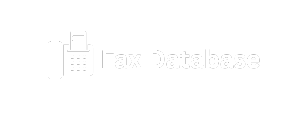In an era where data drives decision-making, having access to verified and updated data is crucial for businesses of all sizes. Whether you’re a small startup or a large corporation, the integrity and accuracy of your data can significantly impact your operations, marketing strategies, and overall success. This article will explore what verified and updated data is, why it matters, how to obtain it, and best practices for maintaining data integrity.
1. Understanding Verified and Updated Data
1.1 What is Verified Data?
Verified data refers to information that has been confirmed for accuracy and reliability. This means that the data has been cross-checked against multiple sources or validated through established processes. Verification is essential to ensure that the data you are using is not only correct but also trustworthy.
Examples of Verified Data
- Contact Information: Email addresses and phone numbers that have been confirmed as active.
- Financial Data: Company revenue and funding records that have been substantiated by reliable sources.
- Market Research: Insights and statistics that have been corroborated by reputable studies or surveys.
1.2 What is Updated Data?
Updated data refers to information that is current and reflects the latest changes or developments. Data can become outdated for various reasons, such as changes in contact information, company mergers, or shifts in market trends. Keeping data updated is essential for effective decision-making.
Examples of Updated Data
- Employee Records: Changes in personnel, such as new hires or departures.
- Market Trends: Recent developments that affect industry dynamics and consumer behavior.
- Customer Information: Changes in customer preferences or purchasing habits.
2. Why Verified and Updated Data Matters
2.1 Enhancing Decision-Making
Having access to verified and updated data allows businesses to make informed decisions. Inaccurate or outdated data can lead to poor choices, wasted resources, and missed opportunities.
2.2 Improving Marketing Effectiveness
Data-driven marketing relies on accurate targeting. Verified and updated data ensures that marketing campaigns reach the right audience, leading to higher engagement rates and conversion rates.
2.3 Strengthening Customer Relationships
Maintaining accurate customer information fosters better relationships. When businesses have updated data, they can personalize interactions and respond to customer needs more effectively.
2.4 Compliance and Risk Management
In many industries, maintaining accurate records is a legal requirement. Verified data helps businesses comply with regulations and avoid potential legal issues.
3. How to Obtain Verified and Updated Data
3.1 Utilize Data Providers
There are several reputable data providers that specialize in offering verified and updated data. These providers often have rigorous processes in place to ensure data accuracy. Some notable data providers include:
- Dun & Bradstreet: Offers comprehensive business data and insights.
- ZoomInfo: Provides detailed company and contact information with a focus on accuracy.
- LinkedIn Sales Navigator: Leverages LinkedIn’s extensive network to provide updated professional data.
3.2 Conduct Regular Audits
Regular data audits are essential for maintaining data Country Email List integrity. By periodically reviewing and validating your data, you can identify inaccuracies and outdated information.
Steps for Conducting Data Audits
- Identify Data Sources: List all sources of data within your organization.
- Assess Data Quality: Evaluate the accuracy and relevance of the data.
- Correct Inaccuracies: Make necessary updates and corrections based on findings.
3.3 Implement Data Validation Processes
Incorporating data validation processes during data entry can prevent inaccuracies from being introduced in the first place. This includes using validation rules, dropdown menus, and mandatory fields.
3.4 Leverage Technology
Utilizing data management tools can streamline the process of maintaining verified and updated data. Some technologies to consider include:
- CRM Systems: Tools like Salesforce and HubSpot can help manage customer data effectively.
- Data Enrichment Tools: Solutions that enhance existing data with updated information from reliable sources.
4. Best Practices for Maintaining Verified and Updated Data
4.1 Establish Data Governance
Implementing a data governance framework canAsia Mobile Number details help ensure data quality across your organization. This includes defining roles and responsibilities for data management, establishing policies for data entry and maintenance, and creating standards for data usage.
4.2 Train Employees
Educating employees on the importance of data accuracy and the processes for maintaining it is crucial. Regular training sessions can help reinforce best practices and keep everyone aligned on data management goals.
4.3 Create a Data Maintenance Schedule
Establish a regular schedule for reviewing and updating data. Depending on your business needs, this could be quarterly, biannually, or annually. Consistency is key to maintaining data integrity.
4.4 Monitor Data Usage
Regularly monitor how data is being used within your organization. This can help identify areas where data may be outdated or irrelevant, allowing you to take corrective action.
4.5 Solicit Feedback
Encourage feedback from users of the data within your organization. They can provide insights into potential inaccuracies or areas where updates are needed, helping maintain data quality.
5. Challenges in Maintaining Verified and Updated Data
5.1 Data Volume
As businesses grow, the volume of data can become overwhelming. Managing large datasets while ensuring accuracy can be a significant challenge. Consider using data management tools that can help automate processes and streamline data handling.
5.2 Rapid Changes in Information
In many industries, information can change rapidly. Keeping up with these changes requires ongoing vigilance and proactive data management strategies.
Conclusion
In today’s data-driven world, the importance of verified and updated data cannot be overstated. Accurate and current information is essential for effective decision-making, successful marketing strategies, and strong customer relationships. By understanding the significance of data integrity and implementing best practices for data management, businesses can unlock their full potential and achieve long-term success. Embrace the power of verified and updated data, and position your business for growth in an increasingly competitive landscape.

